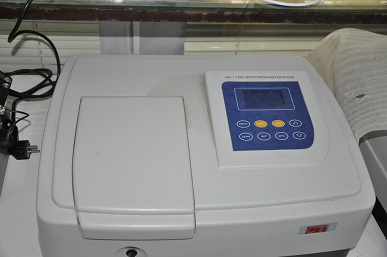|
Spectrophotometry is the quantitative measurement of the reflection or transmission properties of a material as a function of wavelength. It is primarily used for quantitative Analysis of Known Compounds, it is one of the most popular techniques in the Pharmaceutical, Foods and Paints Industries, as well as in water Laboratories. Spectrophotometry designed to measure the degree of absorption of light by a substance, in a definite and narrow wavelength range. The absorption spectrum in the visible and ultraviolet regions of a substance in a solution is characteristic depending on its chemical structure. Therefore, Spectrophoto-metry is used to identify a substance by measuring the absorbances at various wavelengths. This method is applicable to identification tests, purity tests, and assays, in which the absorbance of a solution with a certain concentration is usually measured at the wavelength of the maximum absorption (λmax.) or the minimum absorption (λmin.). Apparatus and Procedure The photoelectric spectrophotometer consists of a monochrometer and a photoelectric photometer. A light source used is a tungsten lamp for the measurement in the visible range, and a heavy hydrogen discharge lamp for the measurement in the ultraviolet range. A quartz or glass cell is used for the visible range; a quartz cell is used for the ultraviolet range. Unless otherwise specified, a suitable path length of the cell is 1 cm.
|

